This week we’re going to look at Triads! A triad is a three note chord. We’re going to look at how they’re constructed and how to apply them in our bass lines.
Why Learn About Chords?
Arpeggios and chord tones (the individual notes of a chord) are essential in creating bass lines even if you don’t realise it. Pretty much every bass line you’ve ever learned is based on chord tones.
A Triad is a three note chord and the core foundation of pretty much every other chord. So they’re an important first step in the study of harmony
Tertian Harmony
When we look at basic chord construction in western music we usually abide by something called Tertian Harmony. This is simply the building of chords by the stacking of thirds.
I’m hoping all of you already have a knowledge of your basic intervals but if not, you should. Intervals are the building blocks of music and a good knowledge of them in all their different guises can make a massive difference to your playing and overall musicianship.
For now you just need to know two intervals. The major and minor thirds:
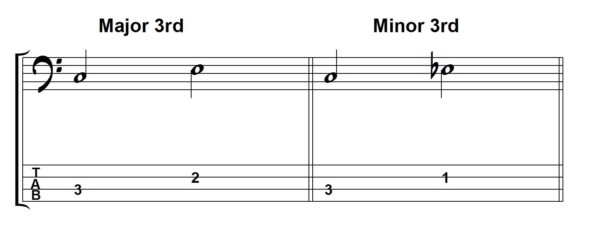
The thirds shown above cover two strings but we can also play them on a single string as follows:
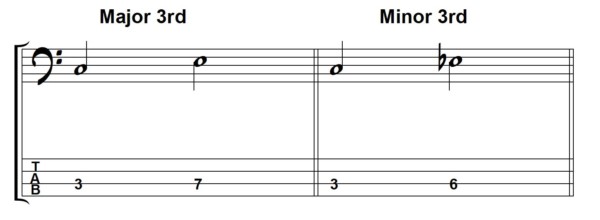
Building Major Triads
So we now have our thirds let’s try building a Major Triad.
To do this we just stack one third on top of another. If we take a C as our root note. Build a major third (C to E) then build a minor third from the E (E to G)
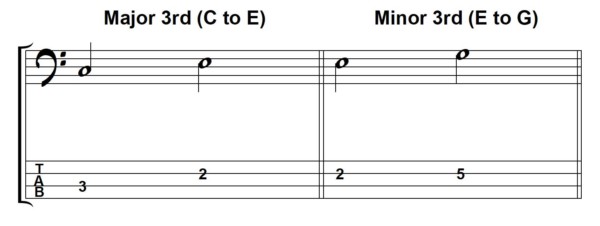
So the C major triad is the notes C, E and G. We can play the triad up and down as follows:

All Four Triads
We can see in the previous example that the Major triad is made from a formula of Major 3rd + Minor 3rd.
We can extend this principle to create the four common triads:
- Major Triad: Major 3rd + Minor 3rd
- Minor Triad: Minor 3rd + Major 3rd
- Augmented Triad: Major 3rd + Major 3rd
- Diminished Triad: Minor 3rd + Minor 3rd
Here are all four arpeggios on a root note of C:

Exercise: Play each arpeggio twice before moving onto the next in the order: Major, minor, augmented, diminished


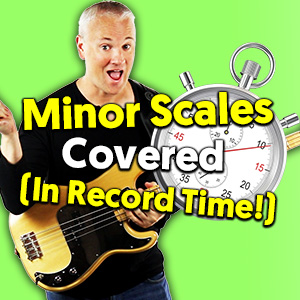



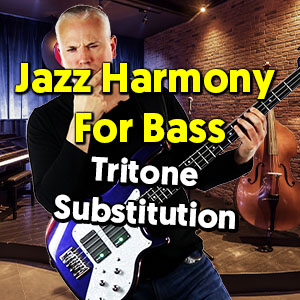



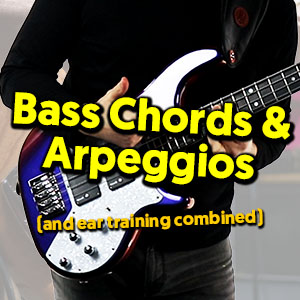


Every Time you drop a new Video. I take the time to watch it. Everything you present is worth it’s weight in gold.
This lesson was very helpful. I was having a problem understanding triads. I keep getting confused with chords and triads.
So, this lesson came at the right time.
I like your style of teaching. You’re like having an actual instructor right in front of you. I’m a show me guy, so watching you and using the PDF files have helped me tremendously.
Thanks
Thanks again Mark, your teaching technique is one that works really well for my learning style. I love the way you describe the notes on the fretboard, as in, note name and string/fret number, AND remind us that there are numerous alternative ways of playing. Definitely you cover all skill levels equally without being at all condescending but at the same time not assuming you’re talking with necessarily experienced bass players.
Brilliant, love this site, well done and please keep this stuff coming.
These videos are great!
Quick question — when building a bass line with the triad arpeggio, do you need to play each in R/3/5 in order, or can you switch the order up? Hitting the R then bouncing to the 5th? Or even playing a pattern within the triad, like playing the root, then bouncing back and forth between the 3rd and 5th a few times before returning to the root? Must each move be a third as opposed to using each third in a desired pattern?
If that makes sense.
THANKS FOR THE LESSON ON THE TRIADS GREAT HELP
I was having trouble with finding the 3rd and 5th on one string. I found this lesson and you explained it beautifully. I actually learned more than what I was looking for. Sometimes I need more than one explanation and if look around your site I will find several. Thank you Mark
Thanks Mark very helpful
Excellent!! Thanks so much.